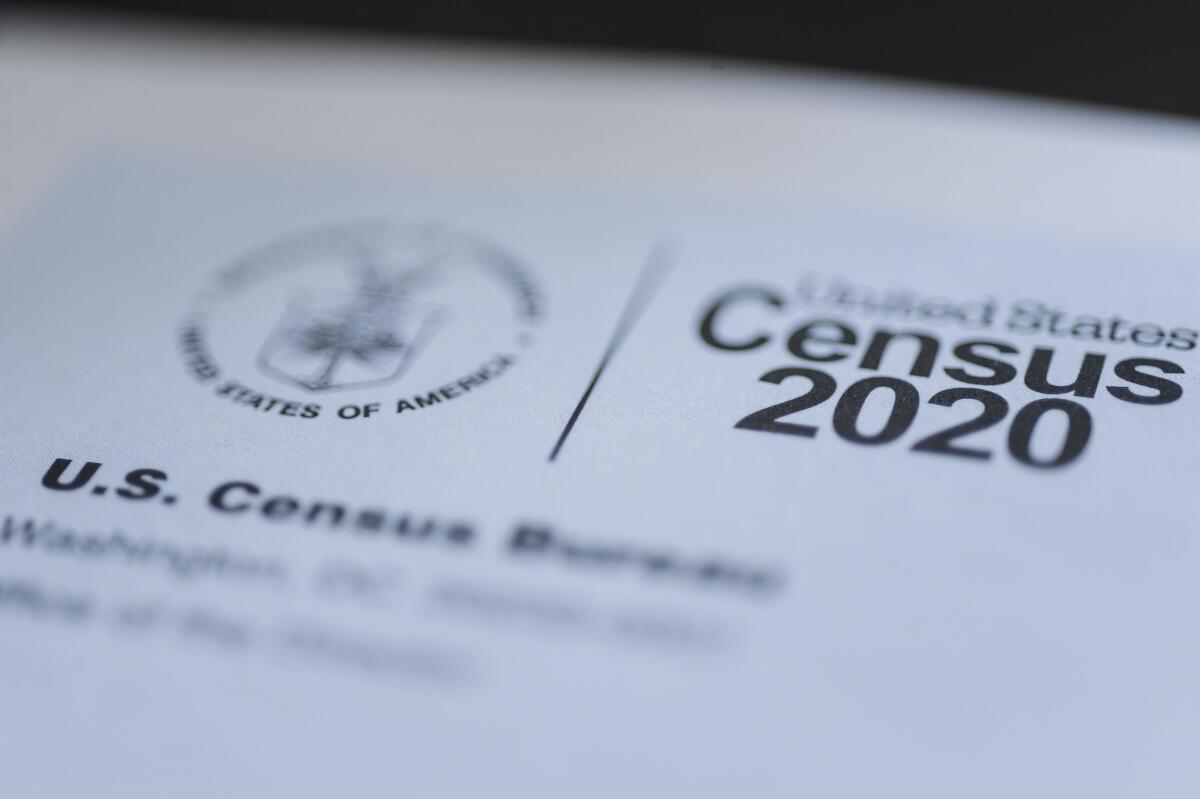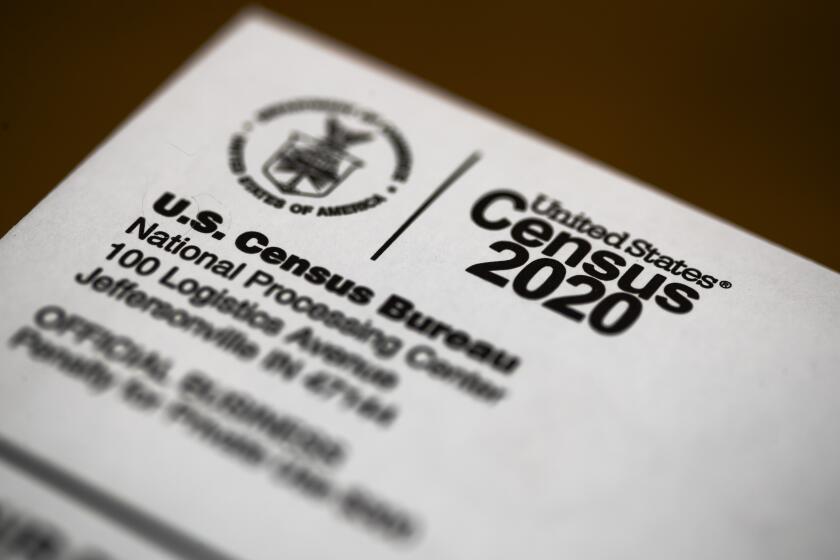Census undercount not as bad as feared, but people of color more likely missed, analysis says

- Share via
The 2020 census missed an estimated 1.6 million people, but given the hurdles posed by the COVID-19 pandemic and natural disasters, the undercount was smaller than expected, according to an analysis by a think tank that performed computer simulations of the national head count.
The analysis by the Urban Institute, released Tuesday, found that people of color, renters, noncitizens, children and people living in Texas — the state that saw the nation’s largest growth — were most likely to be overlooked, though by smaller margins than some had projected for a count conducted amid a global health emergency. Still, those shortfalls could affect the drawing of political districts and distribution of federal spending.
The analysis estimates an undercount of 0.5% of the U.S. population during the 2020 census. If that estimate holds true, it would be greater than the 0.01% undercount in the 2010 census but in the same range as the 0.49% undercount in the 2000 census.
The 2020 head count of the nation’s 331 million residents last year faced unprecedented challenges from the COVID-19 pandemic, wildfires in the West, hurricanes on the Gulf Coast and attempts at politicization by the Trump administration. The census is used to determine how many congressional seats each state gets, provides the data used for drawing political districts and helps determine the allocation of $1.5 trillion in federal spending each year.
“The fact that the undercount wasn’t larger is surprising and certainly a good news story,” said Diana Elliott, principal research associate at the Urban Institute. “This undercount suggests the 2020 census may not be as close in accuracy as 2010, but it may not be as dire as some had feared.”
The official undercount or overcount of the census won’t be known until next year when the Census Bureau releases a report card on its accuracy. The bureau’s post-enumeration survey measures the accuracy of the census by independently surveying a sample of the population and estimating how many people and housing units were missed or counted erroneously.
The nation becomes more diverse, and redistricting gets real.
The Urban Institute created computer simulations that modeled the count by demographic characteristics and geography. Despite the smaller-than-expected national undercount, it showed wide ranges based on race, ethnic background, age and among U.S. states and metro areas.
In 2020, Black and Latino people had net undercounts of more than 2.45% and 2.17%, respectively, according to the Urban Institute estimates, compared with 2.07% and 1.54%, respectively, in 2010.
There was an overcount of white residents by 0.39%, according to the institute, and undercounts of Asians, Native Americans and Hawaiian or Pacific Islanders by 0.6%, 0.36% and 1.5%, respectively.
By comparison, 2010 had an overcount of white people by 0.84%. In 2010, there were undercounts of Asians by 0.08% and Hawaiian and Pacific Islanders by 1.34%. Native Americans on reservations were undercounted by 4.88% in 2010, but those off reservations were overcounted by 1.95%. Children under 5 were undercounted by 4.86%, households with noncitizens by 3.36% and renters by 2.13% in 2020, according to the Urban Institute.
The census results — declining numbers on the Eastside, increases in the Valley — will create challenges for the panel drawing new maps of the City Council’s 15 districts.
One of the nation’s leading civil rights organizations, the National Urban League — not to be confused with the Urban Institute — said recently that an undercount of Black residents could rob African American communities of billions of dollars in federal funding and three congressional seats. National Urban League President and CEO Marc Morial blamed the Trump administration, which attempted but failed to add a citizenship question to the 2020 census form and tried to end the head count early.
The National Urban League has called for congressional hearings to look into the extent of political interference in the 2020 census.
“This isn’t simply an unfortunate accident,” Morial said. “It’s the result of a deliberate campaign of sabotage intended to steer political influence and public resources away from communities of color.”
The Urban Institute’s analysis found variations in accuracy according to geography. Among the 20 largest metro areas, the Twin Cities had the nation’s highest overcount, more than 1%, and Miami had the largest undercount, at about 1.7%.
When more census results come out in summer, some 24 million Latinos will likely have made ‘other’ the second-largest race in the U.S. after ‘white.’
Mississippi and Texas were undercounted by 1.3% and 1.28%, respectively, in the simulated count. Minnesota, Iowa, New Hampshire and Wisconsin also registered overcounts in the simulation, an unsurprising conclusion since they had among the highest self-response rates in the nation during the actual count.
About one-fifth of the U.S. residents not counted in the Urban Institute’s simulations, or more than 377,000 people, lived in Texas, and that could have real-life consequences. According to the institute’s analysis, Texas stands to miss out on $247 million in 2021 federal Medicaid reimbursements for being undercounted.
President Biden’s choice to head the Census Bureau, Robert Santos, was chief methodologist at the Urban Institute before his nomination last spring. He played an advisory role on the project, Elliott said.
More to Read
Sign up for Essential California
The most important California stories and recommendations in your inbox every morning.
You may occasionally receive promotional content from the Los Angeles Times.
















